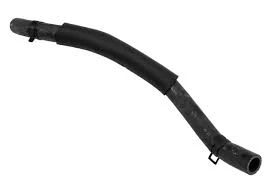oil drain plug size
Understanding Oil Drain Plug Size Importance and Considerations
When it comes to maintaining a vehicle, one of the essential components that often gets overlooked is the oil drain plug. The oil drain plug size may seem minor, but it plays a significant role in oil changes and overall engine performance. Understanding the dimensions and specifications of this small but crucial part can help ensure proper maintenance and avoid potential issues down the road.
What is an Oil Drain Plug?
The oil drain plug is a threaded bolt located at the bottom of the engine oil pan. Its primary function is to provide a secure seal for the oil and facilitate the draining process during oil changes. When it’s time to replace the old oil with new fluid, the plug is removed to allow the used oil to flow out completely.
Importance of Size
The size of the oil drain plug is critical for several reasons. First, an improperly sized plug may lead to leaks. If the plug is too small, it may not create a proper seal, allowing oil to escape. Conversely, if the plug is too large, it might not fit into the pan’s threads, which can damage the oil pan or cause cross-threading. Therefore, knowing the correct size ensures that mechanics and DIY enthusiasts can select the right drain plug for their vehicles.
Common Sizes and Specifications
oil drain plug size

Oil drain plugs come in a variety of sizes, typically measured in millimeters or inches, and the specifications can vary widely depending on the make and model of the vehicle. For example, many cars use a 14mm or 15mm drain plug, while larger vehicles, such as trucks or SUVs, might require plugs that are 16mm or larger.
It is essential to refer to the vehicle's manufacturer's guidelines or user manual to determine the correct size and type of drain plug. In some cases, the material of the plug may also be specified; many are made from aluminum or steel, which provide different levels of durability and resistance to corrosion.
Choosing the Right Drain Plug
When selecting an oil drain plug, there are several factors to consider. Beyond size, you should also check for features such as gasket type. Flexible rubber or metal gaskets can provide an additional layer of sealing and prevent leaks. Furthermore, purchasing a high-quality drain plug can save time and money in the long run, as cheaper alternatives may warp or break over time.
Conclusion
In conclusion, while the oil drain plug may seem like a simple and insignificant component of your vehicle, its size and proper selection are vital for maintaining engine health. Regular checks and maintenance, including ensuring that the oil drain plug is in good condition and appropriately sized, can prevent leaks and potential engine damage. Always refer to your vehicle’s specifications to choose the correct oil drain plug size, and do not hesitate to seek professional assistance if needed. Investing time in understanding this small part can lead to a smoother and more efficient engine performance in the long run.
-
Understanding the Front Main Engine Seal: Purpose, Maintenance, and Installation
News Jul.29,2025
-
Understanding O-Rings and Seal Rings: Types, Applications, and Custom Solutions
News Jul.29,2025
-
Understanding Crankshaft Oil Seals: Rear Seals, Pulley Seals, and Their Role in Engine Integrity
News Jul.29,2025
-
The Importance of Front and Rear Crankshaft Seals in Engine Performance and Oil Management
News Jul.29,2025
-
Crank Oil Seals: Functions, Types, and Cost Considerations in Engine Maintenance
News Jul.29,2025
-
A Comprehensive Guide to O-Rings and Seals: Types, Materials, and Global Applications
News Jul.29,2025
-
Mastering Diesel and Performance Engine Maintenance: A Guide to Critical Oil Gaskets
News Jul.28,2025
Products categories















